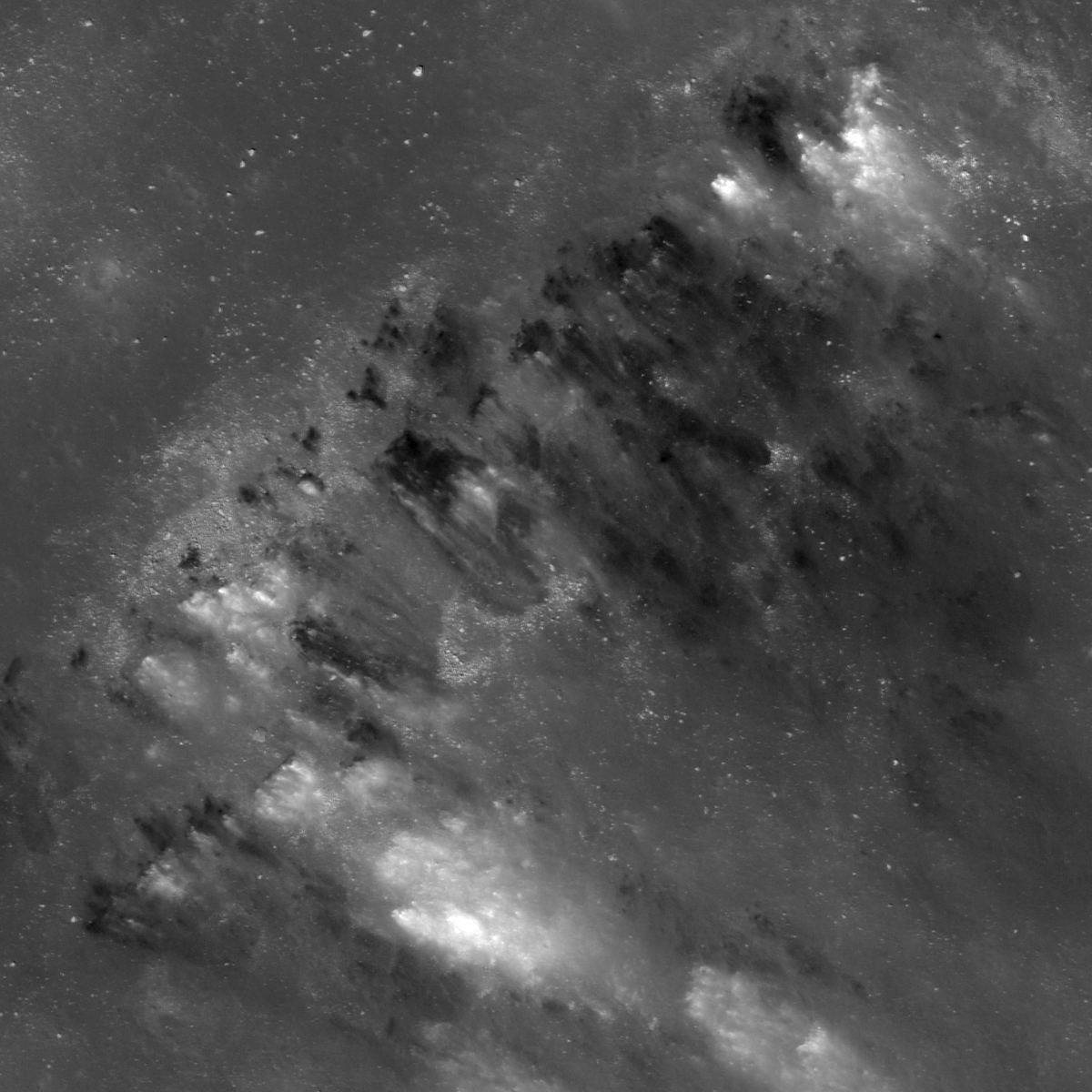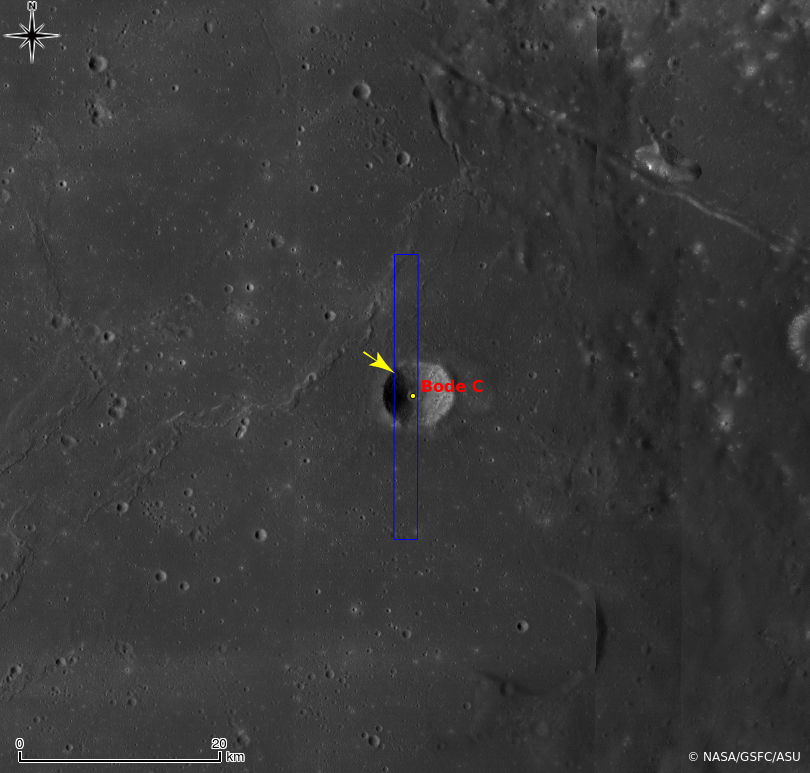
Today's Featured Image highlights the slope of the northeastern crater wall inside Bode C. The Bode C crater is 7 km in diameter, and located at eastern edge of Mare Insularum. Low reflectance material flowed down the middle of the wall, possibly indicating a subsurface layered structure of low reflectance materials along this elevation. Dark streaks are found along an almost constant elevation throughout the whole crater. Thus the spatial extent of this layer is likely more than the crater diameter.
Rima Bode, one of many Dark Mantle Deposits (DMD), is located about 20 km east from this crater. DMDs are thought to be formed as fire fountaining eruptions spread ash around a vent. The size of Rima Bode is about 70 by 80 km, with a crescent shape extending northwest and southwest direction. If this DMD distributed ash to the west, Bode C could have excavated this layer of Rima Bode's pyroclastics, thus explaining the dark streaks on its crater wall. High resolution images of impact craters give scientists a lot of information about the crater itself, but also tell about the surrounding geologic structures and history.
Explore the streaks of low reflectance materials inside Bode C in full NAC frame!
Related posts:
Rima Bode: Constellation region of interest, Pyroclastic Trails, Hyginus Crater and Pyroclastics, Dark Wisps in Copernicus, Dark streaks in Diophantus crater, Low Reflectance Deposits on the Lassell Massif, DMD Excavations, Pyroclastic Excavation
Published by Hiroyuki Sato on 12 June 2013
